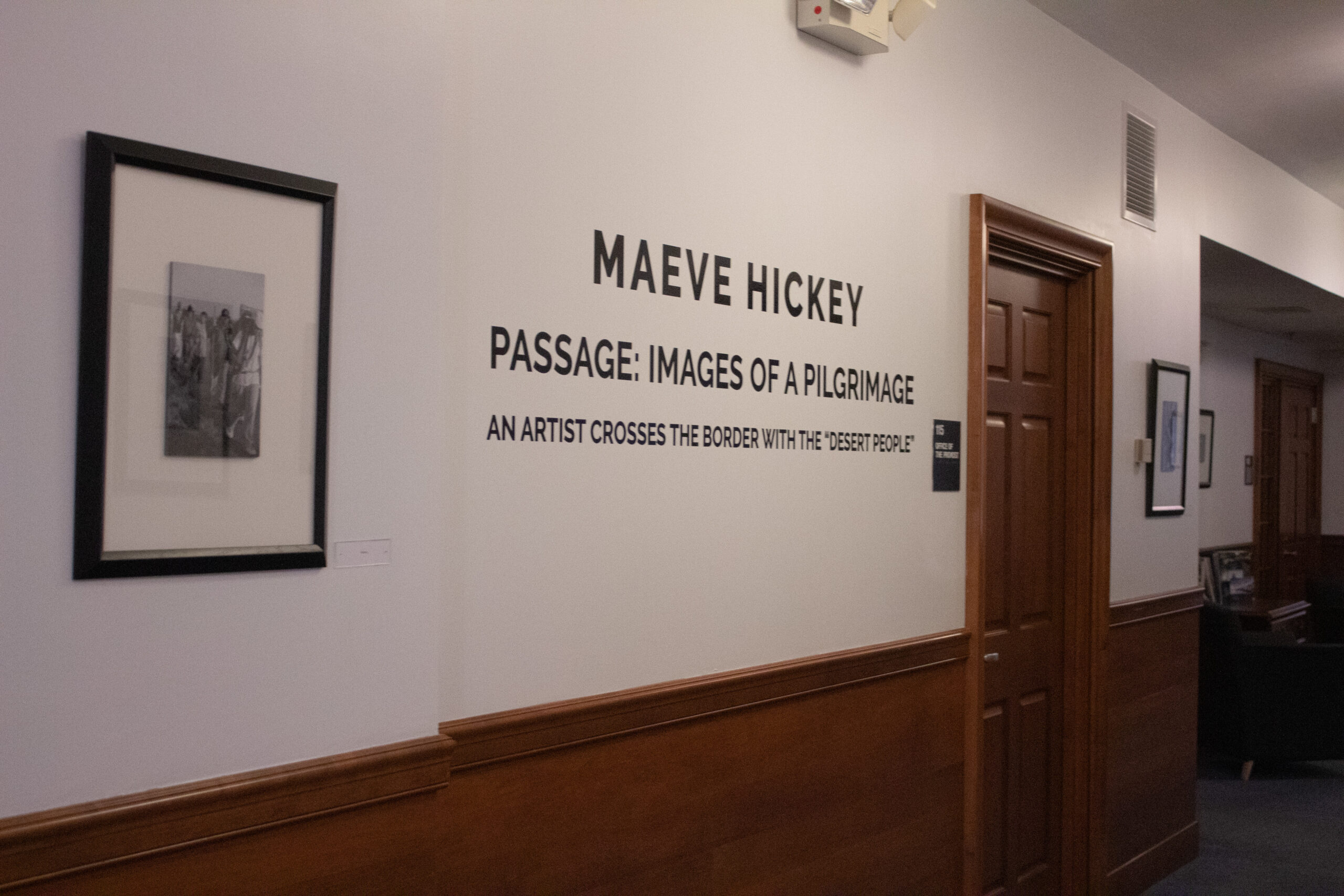Photographs capturing a journey with the Tohono O’odham to cross borders from Mexico is up in Green Hall as part of an exhibit. PHOTO CREDIT: Hannah Charron | Staff Photographer
Maeve Hickey, a University of Rhode Island alumna, now has an art exhibit entitled “Passage: Images of a Pilgrimage. An Artist Crosses the Border with the “‘Desert People,’” in Green Hall.
The photo album provides a rare close view of the lives of the Tohono O’odham people, a Native American tribe that mostly resides within Arizona and the northern Mexican state of Sonora. The photographs document Hickey’s journey with the Tohono O’odham as hundreds of tribe members made the annual pilgrimage across the United States-Mexico border.
“The Walk,” as it is known, is a religious tradition of the Tohono O’odham people. The journey takes about a week to complete. It concludes upon the arrival of pilgrims at the shrine of Saint Francisco Xavier, in the Mexican city of Magdalena de Kino.
Along the dimly-lit walls of the exhibit, photos depict rituals, practices and daily life during their journey.
One photo captures a scene of O’odham men gathering around a village effigy, while another depicts a roadside shrine. Others capture scenes of people paying their respects at an altar, and another is a portrait of a 103-year-old art restorationist.
A placard at the reception describes the exhibit as “photography that captures the humanity and texture of the journey in images and their ephemeral shrines and surprising sights encountered along the way”.
The exhibit had been in the works for a year, though Hickey originally made the journey in 2003.
Hickey, in a moment of reflection, recalled the long journey up to this point at the exhibit’s grand opening.
“I’d like to thank everyone for showing up,” Hickey said. “I came here at the age of 17 to be an art student. I knew even at my age, [the] decision to come to URI would be very important to me. I’m extremely grateful that I came to URI, it has changed my life”.
According to Hickey, her traveling experience was “fulfilling and eye-opening.” She added a special thanks to the Art Department for such an opportunity.
The exhibit is open to all URI students and faculty. Notably, many art students were in attendance.
A fourth-year student from URI expressed some thoughts about the exhibition.
“I think there’s not a lot of visibility for current day Native populations in general,” they said. “There’s been a lot racist narratives and caricatures that people in America have been fed. Native Americans are portrayed as almost having ‘disappeared.’ So I think there’s inherent value in work like this that portrays current day indigenous people and their humanity.”
Indeed, Hickey’s work highlights a need for representation and awareness of Native American culture. In particular, honest representations, such as her own exhibit, provides just that. In pursuit of her exploration,
Hickey attempted to fully immerse herself during her time with the O’odham tribe. She lived and slept alongside the people, documenting their personal interactions. She did so in close proximity, a perspective that was rarely seen before her journey The results are fascinatingly intimate.
Hickey’s work can also be found in exhibits worldwide, mainly consisting of similar topics and explorations of culture.
To find this exhibition, visit Green Hall at URI.




